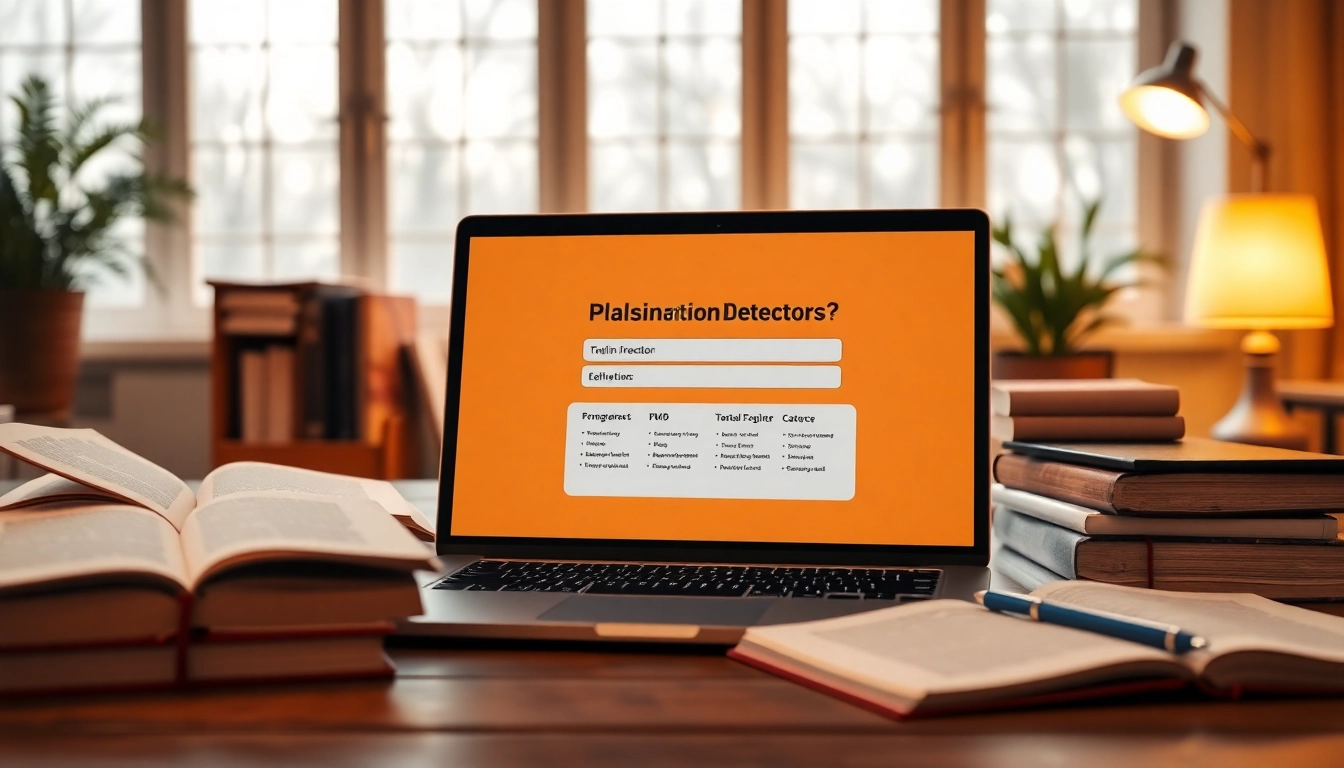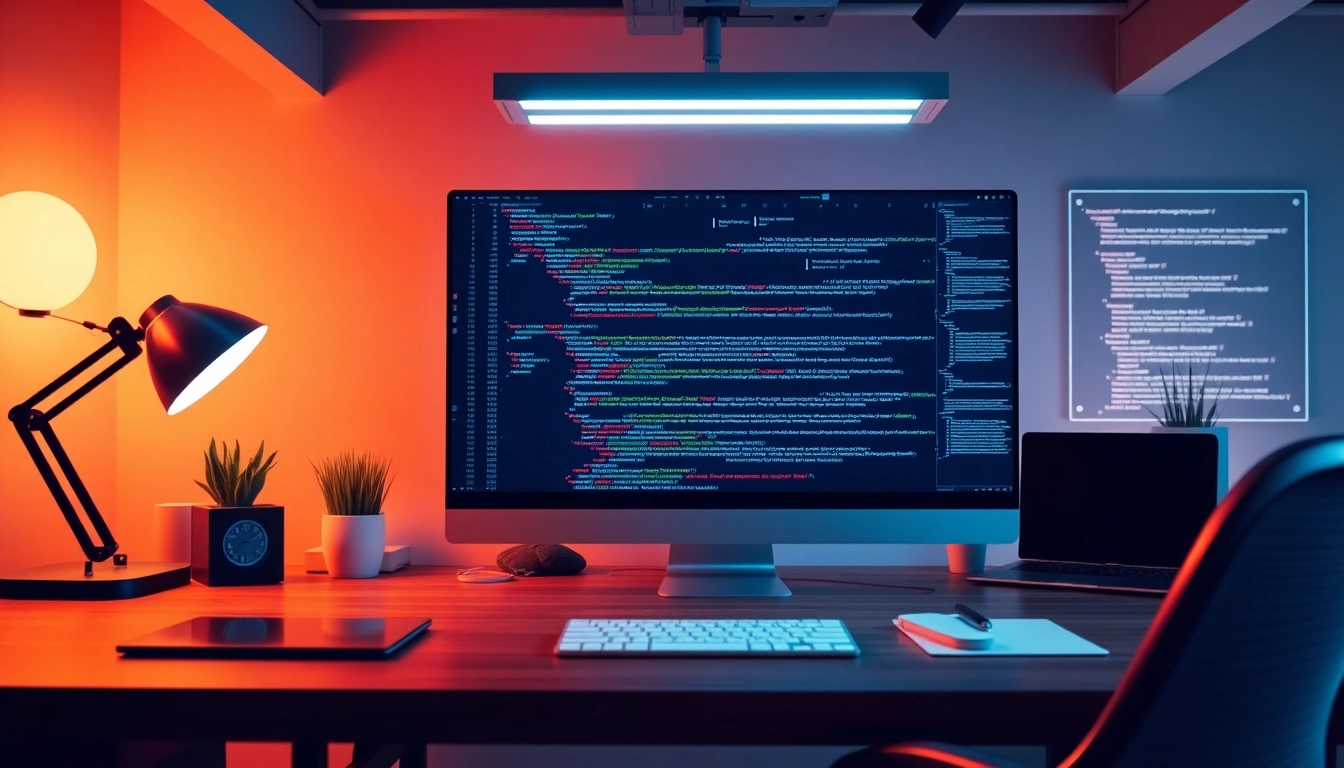Understanding Plagiarism and Its Implications
Plagiarism is a significant concern in various fields, particularly in education and academia. With the increasing availability of information online, the temptation to use someone else’s ideas or text without appropriate attribution has become more prevalent. Understanding the nuances of plagiarism is essential for maintaining academic integrity and ensuring original contributions to any field. Tools like a plagiarism detector are vital in this context, helping individuals and institutions uphold standards of originality and authenticity.
What Constitutes Plagiarism?
Plagiarism can be defined as the act of using someone else’s work—whether it be their text, ideas, images, or music—without proper acknowledgment. While this typically applies to written content, it extends to any creative work, including research papers, software code, and even data sets. Plagiarism can be categorized in several ways:
- Direct Plagiarism: Copying someone else’s work word-for-word without citation.
- Self-Plagiarism: Reusing one’s own previously submitted work without citation.
- Mosaic Plagiarism: Mixing copied text with original text, often referred to as “patchwriting.”
- Accidental Plagiarism: Unintentionally failing to cite sources adequately, often due to ignorance.
Each form of plagiarism poses unique challenges and consequences, making awareness and adherence to proper academic practices indispensable.
Why Academic Integrity Matters
The foundation of academia is built upon trust and integrity. Academic integrity is fundamental to scholarly work as it ensures that research and findings are credible and reliable. When students or researchers engage in plagiarism, they undermine the very principles of honesty and respect within the academic community. These actions can distort academic records, undermine the value of degrees, and lead to a breakdown of trust among peers and institutions.
Furthermore, upholding academic integrity is critical for fostering an environment that promotes genuine learning and intellectual growth. It encourages students to think critically, engage with materials thoughtfully, and develop their unique voices and ideas.
Consequences of Plagiarism in Education
The repercussions of committing plagiarism can be severe, varying based on the type of institution and the severity of the act. Common consequences include:
- Academic Penalties: This can include failing the assignment, course, or even expulsion from the institution.
- Legal Issues: In severe cases, plagiarism can lead to copyright infringement lawsuits, resulting in legal penalties.
- Reputational Damage: An individual’s credibility can be irreparably harmed, impacting future academic and career opportunities.
- Loss of Educational Opportunities: Scholarships, grants, and professional opportunities may be revoked due to plagiarism.
Given these potential consequences, it becomes clear why understanding plagiarism and utilizing tools to detect it is crucial for students and educators alike.
How a Plagiarism Detector Works
A plagiarism detector is a tool designed to identify instances of plagiarism by comparing written content against a vast database of existing works. Most of these tools rely on sophisticated algorithms and databases to perform their checks.
Fundamentals of Plagiarism Detection Technology
While different plagiarism detection tools may vary in their methodologies, several core technologies underpin their functionality:
- Textual Analysis Algorithms: Many detectors use sophisticated algorithms that analyze text for similarities, identifying exact matches or close paraphrases.
- Database Comparisons: Plagiarism detectors often access extensive databases containing billions of documents, including academic publications, web content, and student papers.
- Machine Learning: Some advanced plagiarism checkers incorporate machine learning models that enhance the detection accuracy by learning from patterns in data.
Different Types of Detection Algorithms
Plagiarism detection tools employ a variety of algorithms to identify copied content. Some of the most common include:
- Exact Match Detection: This method identifies passages in the original text that are directly copied.
- Fingerprinting: This technique breaks down documents into smaller segments and compares those segments with the database.
- Semantic Analysis: Used by more sophisticated detectors, this approach examines the meaning of phrases to identify potential paraphrasing or ideas that have been borrowed.
- Reference Checks: Some tools also identify citations and references to gauge whether source material is appropriately attributed.
Evaluating the Accuracy of Plagiarism Detectors
The effectiveness of a plagiarism detector can significantly vary based on its underlying technology, database size, and algorithm sophistication. When choosing a tool, consider:
- Database Coverage: A tool with a broader database is more likely to detect potential plagiarism effectively.
- Detection Speed: Fast processing is essential for meeting deadlines, especially in academic settings.
- Reporting Features: A good plagiarism detector should provide comprehensive reports with detailed analyses and suggestions for resolving issues.
- User Feedback: Consider reviews and testimonials from other users to gauge reliability and accuracy.
By understanding these factors, users can select the best plagiarism detection tool suited to their needs.
Features to Look for in a Plagiarism Detector
Not all plagiarism detectors are created equal. When evaluating various options, it’s important to assess their features to ensure they meet your specific requirements.
User-Friendly Interface and Accessibility
A plagiarism detection tool should have an intuitive interface that is easy to navigate. Users should not struggle to find basic functionalities. Additionally, many users prefer tools that are accessible across various devices, from desktops to mobile applications, lending convenience and flexibility, especially for busy students and professionals on the go.
Comprehensive Report Generation
A robust plagiarism detector should provide detailed reports that outline instances of potential plagiarism detected in the submission. Look for features such as:
- Highlighting of plagiarized sections in the text.
- Attribution of original sources.
- Percentage of original versus plagiarized content.
- Guidelines for paraphrasing or referencing properly.
Such reporting allows users to correct issues effectively, safeguarding their academic integrity.
Integration with Academic Writing Tools
Integration capabilities are another important consideration. A plagiarism detector that can be integrated with popular writing tools, such as Microsoft Word or Google Docs, can significantly streamline the writing and review process. This seamless functionality can save users time and enhance productivity, enabling them to check for potential issues as they write rather than after completing a document.
Comparing Popular Plagiarism Detectors
There are numerous plagiarism detection tools available, each offering a unique set of features tailored to different needs. Below, we compare several key players in the market.
Key Features of Grammarly vs. DupliChecker
Grammarly is primarily known as a grammar checking tool; however, it includes a strong plagiarism detection feature:
- Grammarly: Offers real-time plagiarism checks, with a sleek user interface, and produces comprehensive reports while integrating well with various writing platforms. It is particularly favored for its grammar and style recommendations alongside plagiarism detection.
- DupliChecker: This tool is foolproof for detecting plagiarism and is completely free. DupliChecker allows users to manually check text through cutting and pasting, capturing a variety of sources. Though effective, it lacks advanced features seen in subscription-based services.
Analyzing Scribbr and Copyleaks
Both Scribbr and Copyleaks offer extensive plagiarism detection services targeted towards students and researchers:
- Scribbr: Focuses predominantly on academic integrity, providing in-depth plagiarism reports. It is especially effective for heavily edited texts, as it has a reputation for accuracy that surpasses many competitors.
- Copyleaks: Not only focuses on text but can also detect plagiarism in code and AI-generated text. This dual functionality broadens its applicability for a diverse range of users.
Cost vs. Value in Free Plagiarism Checkers
Free plagiarism checkers can be tempting, especially for students. However, it is vital to evaluate whether the value they provide justifies their usage:
- Many free tools yield limited results due to smaller databases, resulting in less reliable results.
- Some free options may not offer comprehensive reports or detection methodologies, making them less useful for academic purposes.
- Consideration should be given to subscription services that may have a premium cost but enhance integrity guarantees through broader coverage and more sophisticated algorithm implementations.
Best Practices for Avoiding Plagiarism
While plagiarism detectors are invaluable tools in the academic landscape, the most effective strategy against plagiarism is preventative. Here are some best practices to keep in mind.
Correct Citation and Referencing Techniques
Understanding how to cite sources appropriately is critical in maintaining academic integrity. Familiarize yourself with various citation styles, such as APA, MLA, or Chicago. Each has its particular guidelines for citing different types of sources, which can include:
- Books
- Journal articles
- Websites
- Conference papers
By mastering these techniques, you can easily incorporate external information while giving the original authors due credit.
Effective Paraphrasing Strategies
Paraphrasing is a vital skill that allows you to incorporate the ideas of others while presenting them in your own unique voice. Effective paraphrasing involves:
- Comprehending the original text fully.
- Rewording the information adequately while retaining the original meaning.
- Citing the source to maintain integrity.
Practicing paraphrasing not only helps prevent plagiarism but also helps improve your writing and comprehension skills.
Resources for Further Learning on Academic Integrity
Continuous education on academic integrity is essential. Various resources, including educational workshops, online courses, and institutional offices dedicated to academic integrity, can support students in understanding best practices:
- University writing centers.
- Online platforms such as Coursera or edX focusing on academic writing.
- Dedicated blogs and forums discussing academic integrity issues.
By leveraging these resources, individuals can stay informed and committed to maintaining high standards of academic integrity.



